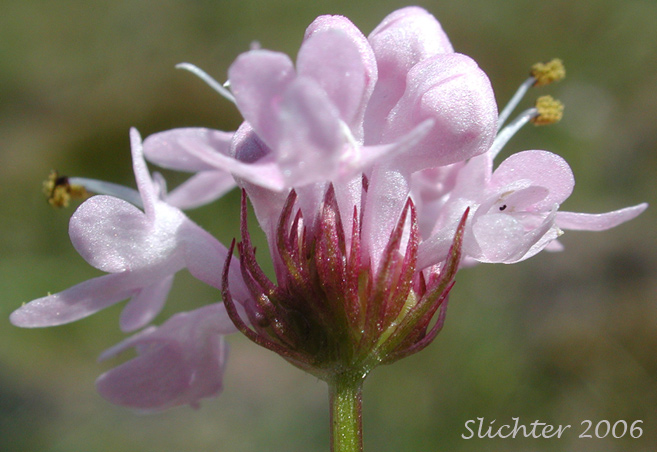
Rosy plectritis is a slender, single-stemmed annual from 10-60 cm tall. The herbage is mostly smooth. The leaves are opposite on the stem, with the lowest oblong with petioles, the upper elliptic in shape and sessile. The leaves range from 1-6 cm long and 3-22 mm wide.
The species name refers to the inflorescence of congested flowers, which form a tightly packed globe of flowers at the apex of the stem. The corolla of the flowers are pink or white, nearly campanulate, 4.5-9.5 mm long, and strongly two-lipped. The upper pair of petals are strongly fused while the lower trio are distinctly separate. A thick spur is also evident.
Rosy plectritis may be found on open, seasonally moist slopes and meadows.
Rosy plectritis may be found from southern Vancouver Island along the western crest of the Cascades to southern California.